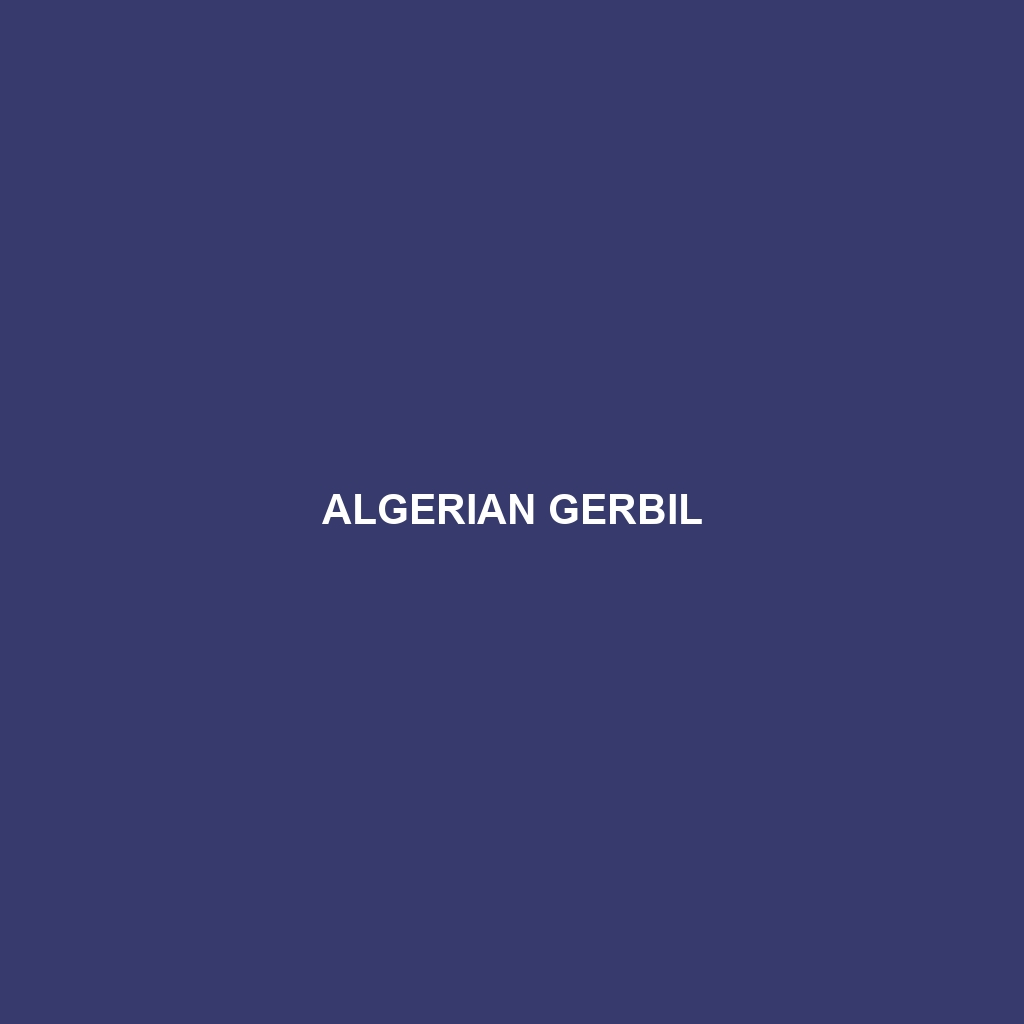Algerian Gerbil
Common Name: Algerian Gerbil
Scientific Name: Gerbillus graspus
Habitat
The Algerian Gerbil is primarily found in the arid and semi-arid regions of North Africa, particularly in Algeria and parts of Tunisia. These small rodents thrive in sandy deserts and dry grasslands, where they inhabit burrows to escape extreme temperatures and predators. Their ability to adapt to such habitats makes them an integral part of their ecosystem.
Physical Characteristics
Algerian Gerbils are small rodents, typically measuring between 18 to 26 cm in length, including their long, tufted tails which can be equally as long as their bodies. They possess a soft, sandy-colored fur that blends well with their desert surroundings, providing effective camouflage. Their large, round eyes and elongated hind limbs enhance their ability to navigate their environment, making them agile and adept at digging.
Behavior
The Algerian Gerbil exhibits fascinating behaviors that reflect its adaptation to desert life. These nocturnal creatures are most active during the cooler hours of the evening and night. They are social animals, often living in colonies that help them maintain their social structure and enhance their survival through group foraging and shared vigilance against predators. The gerbils are known for their impressive digging skills, creating complex burrow systems for nesting and food storage.
Diet
Algerian Gerbils are primarily herbivorous, feeding on seeds, grains, and plant material that they can find within their habitat. Their diet can include a variety of desert plants, seeds, and roots, which provide essential nutrients and hydration. These rodents have adapted their feeding habits to ensure they can survive long periods without water, extracting moisture from their food sources.
Reproduction
Breeding typically occurs during the spring and summer months when food availability is at its peak. Female Algerian Gerbils can give birth to litters of about 4 to 6 young after a gestation period of approximately 25 to 30 days. Offspring are born blind and hairless but develop quickly, becoming independent in just a few weeks. This rapid reproduction cycle is crucial for maintaining population levels in their challenging habitats.
Conservation Status
The Algerian Gerbil is currently classified as Least Concern by the International Union for Conservation of Nature (IUCN). However, habitat degradation due to agricultural expansion and desertification poses potential threats to their populations. Conservation efforts continue to monitor their status and protect their natural habitats.
Interesting Facts
Algerian Gerbils are known for their impressive ability to thrive in extreme conditions, being able to survive without drinking water directly for extended periods. They can also store food in their cheek pouches to eat later, showcasing their adaptability and resourcefulness in the wild.
Role in Ecosystem
As granivores, Algerian Gerbils contribute significantly to the seed dispersal in their ecosystem, promoting plant growth and diversity. Their burrowing activities aerate the soil, facilitating water infiltration and improving the overall health of their habitat. Additionally, they serve as prey for various desert predators, thus playing a crucial part in the food web.
